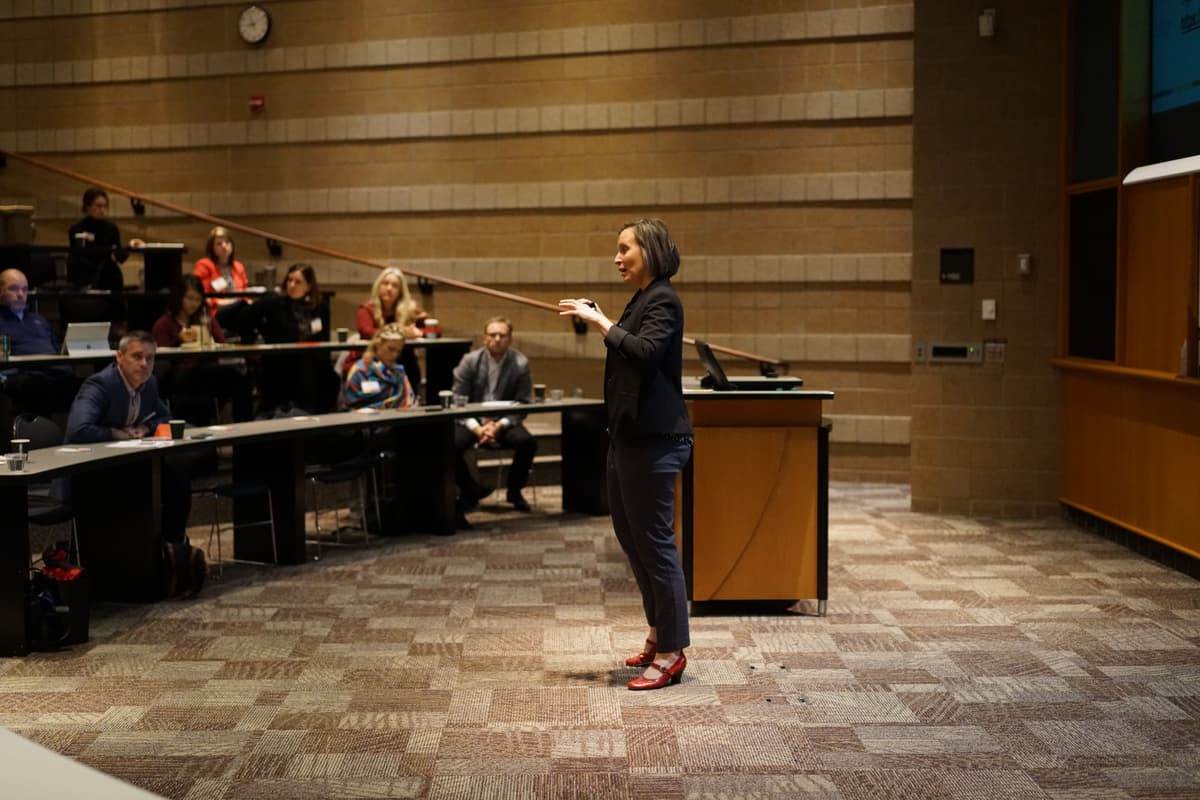
The Influence and Impact of Changing Demographics
By all measures, Minnesota’s future is bright. High school graduation rates are up, our GDP is increasing year-over-year, and slowly but surely, employment gaps are narrowing. However, we are falling behind when it comes engaging professionals of color, addressing an aging population and future-proofing our workforce.
At our last Way We Work event of 2019, we were joined by Allison Liuzzi of Wilder Research. As program director of MN Compass, Liuzzi and her team spend their time researching progress across the state and tracking trends in topic areas like education, economy, housing and so many more. Liuzzi’s presentation narrowed in on one particularly pressing subject: Workforce. Specifically, how are our communities changing? And how does that impact how we nurture talent?
We’re Aging
In 2018, 1 out of 5 residents were older adults in 45 out of 87 counties in Minnesota. That number is predicted to go up to 59 in just two years. In 2030, that number is predicted to jump to 80 out of 87 counties, predicted Liuzzi.
Our state’s population of school-age children (ages 5-17) is growing stagnant; currently this group is only the second to the rapidly growing percentage of adults 65 or older. “Both of these groups are considered ‘dependent populations,’ meaning they are less likely to be engaged in the workforce and more likely to need services,” said Liuzzi. “This shifts our where priorities are; are we putting resources and time toward our schools or are we putting them toward facilities and adult day centers?”
We haven’t seen anything like this before. Since the 1950s, growth in our older adult population averaged a 69,000 person increase per decade, but the 2010s and 2020s will be more than four times that level, at 282,000 and 297,000 respectively. That equals more older adults in just 20 short years than the previous 60 combined.
What does this mean for workers and companies? Right now, roughly 700,000 Baby Boomers make up our workforce — that’s a quarter of our state’s working population. But starting in 2011, Boomers began exiting the workforce in droves. When they do retire, the state will face some “leadership vacuums,” and need people to fill the roles – at all levels – that are now vacant. Liuzzi and her team predict a rise in industries like housing, transportation, and other service sectors as we build systems to support and care for the increasingly aging population.
Our Diverse Populations Are Growing
Our emerging workforce is more racially and ethnically diverse than those retiring from the workforce. While the aging population is largely white, almost 50% of Minnesota’s younger population identify as people of color. In 1960, only 1% of Minnesotans identified as people of color but now that number is 23%, and is expected to be 1.5 million people by 2030. One of the fastest growing groups are children under the age of 18 who identify as Hispanic.
Liuzzi emphasized that in order for our state to have a viable, let alone thriving, economic future, we have to be a place that not only welcomes but meaningfully includes and engages diverse populations.
The Impact on our Workforce
Since 2010, Minnesota has had a net gain of 82,000 residents due to migration. Behind those numbers are even more interesting facts: We saw a net loss of 26,000 people to other states, but 108,000 net gain of people from other countries. But perhaps one of the most interesting facts that Liuzzi and her team has uncovered: We’ve lost retirees to predictable places like Florida, Arizona, and Texas, but we’ve also lost workers to North Dakota. While Minnesota has a lot of economic opportunities, Liuzzi’s research shows that statewide we’re not great at offering meaningful connections for professionals of color.
Our state remains home to some of the largest gaps in employment in the nation, due largely to not engaging talent that is already available. Consider these solemn statistics:
- Ranked 48th with a 25.8% gap between White and American Indian populations
- Ranked 43rd with a 8.3% gap between White and Asian populations
- Ranked 44th with a 14.7% gap between White and Black populations
- Ranked 40th with a 7.0% gap between White and Hispanic populations
Liuzzi closed by reiterating the importance of workplace initiatives around diversity, equity, and inclusion for any competitive business to get ahead – or even stay afloat – in the coming decades. Employers who engage overlooked populations in Minnesota are not only doing the right thing but also strengthening our future economy and workforce.
Additional resources:
- Allison's Presentation (PDF)
- Learn more about MN Compass
- Aging trends in Minnesota
- Overview of demographic changes in Minnesota
Stay connected with Antenna. Follow @Antenna for our take on marketing trends, corporate culture, and current events.
ABOUT ANTENNA
Founded in 2006, Antenna is a leader in bringing top marketing professionals to corporations and non-profits for project-based consulting, interim leadership, staff augmentation, and direct placement needs. Headquartered in Minneapolis, Antenna draws from its private community of experienced marketers to provide clients with on-demand resources – both individuals and teams. Our vision is to fundamentally change the way marketing teams get work done by helping clients balance the flexibility and expertise required by today’s modern marketing organizations.
